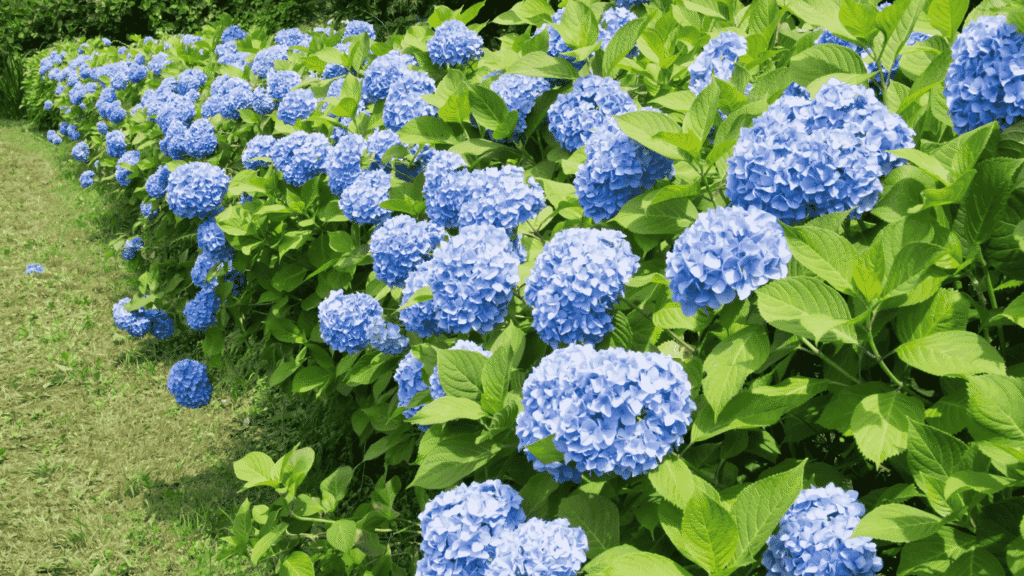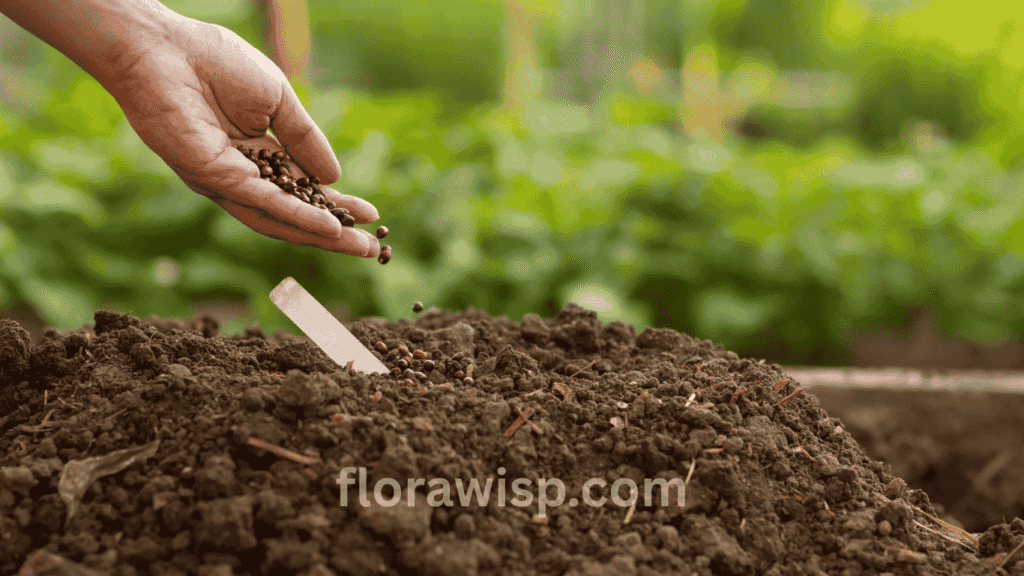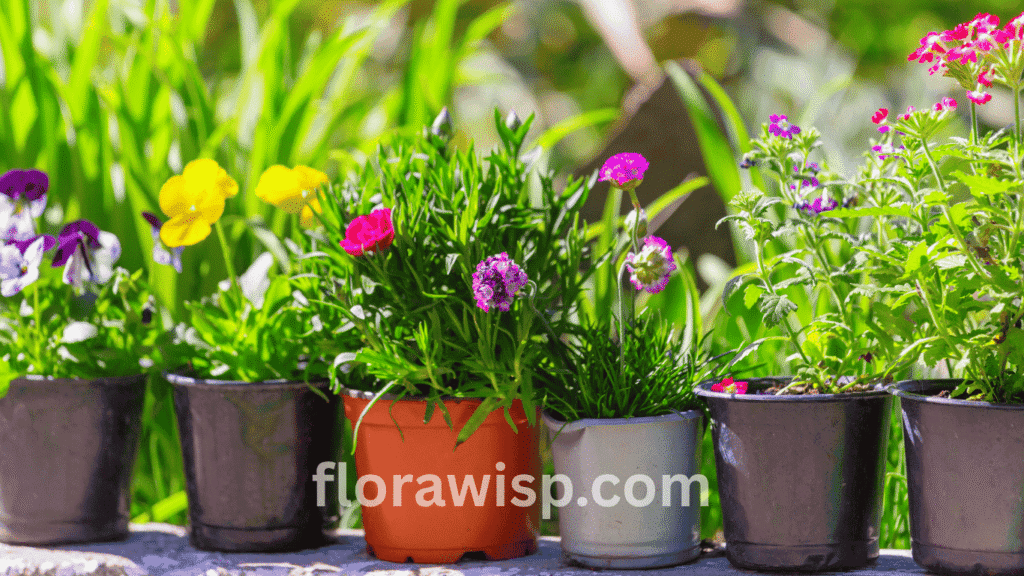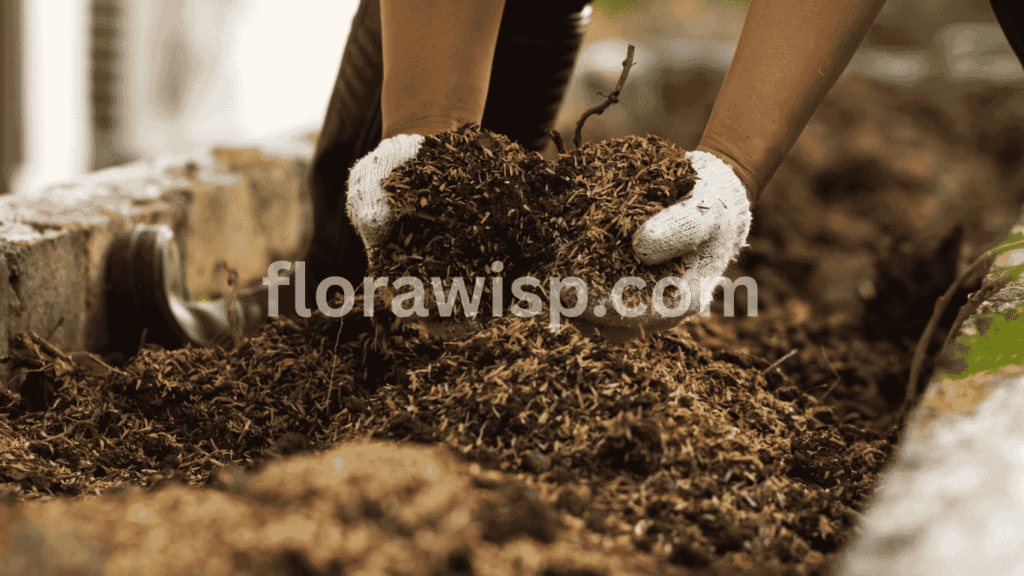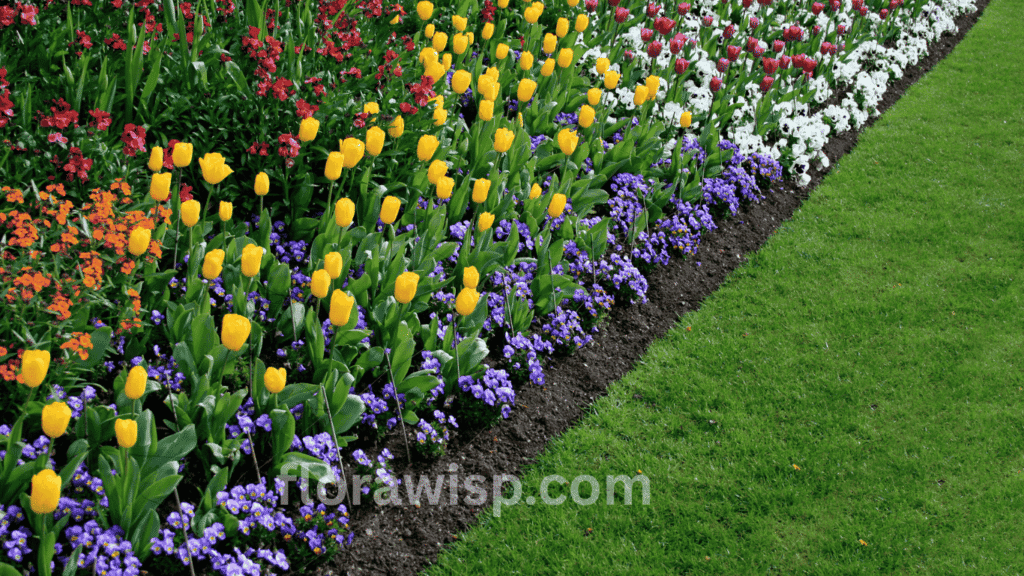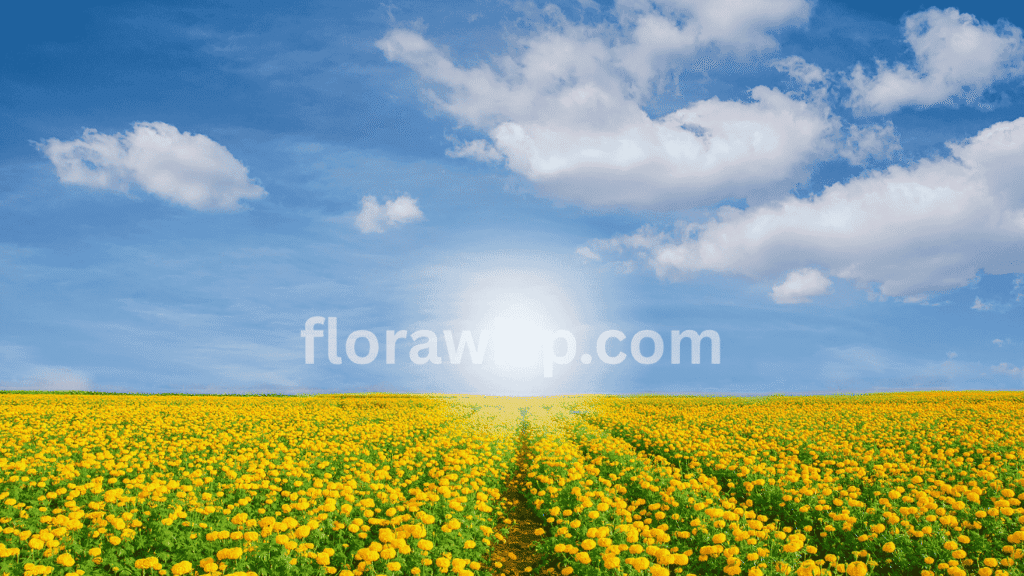Blue hydrangea flowers thrive in USDA Zones 5–9 and bloom best in acidic soil with a pH between 5.0 and 5.5. The blue color develops when aluminum is absorbed by the plant roots, pine mulch, coffee grounds, and aluminum sulfate help maintain rich blue tones. Morning sun and afternoon shade protect blooms from scorching and fading.
Popular varieties include Nikko Blue, Endless Summer, Blue Enchantress, and Blue Lacecap, each offering different bloom shapes, heights, and growth habits. Spacing plants 3 feet apart and planting in early spring or fall gives them the best start.
Blue hydrangeas need deep watering 2–3 times a week in summer, light feeding with low-nitrogen fertilizer, and variety-specific pruning based on bloom type. They pair beautifully with ferns, hostas, lamb’s ear, and white roses in landscapes and bouquets.
Fresh, dried, or faux, Hydrangea Flowers are used in home décor, wedding arrangements, and symbolic gardens. They represent gratitude, sincerity, and calm making them as meaningful as they are beautiful.
You,ll Find Here
What Makes Blue Hydrangea Flowers So Special?
There’s something truly captivating about a blue hydrangea. As someone who has grown them across various soil types in USDA Zones 6 and 7, I can tell you they’re unlike any other flower in the garden. Their color-changing magic, based on soil pH, is what makes blue hydrangea flowers so unique. In acidic soil with a pH between 5.0 and 5.5, the plant absorbs aluminum, which transforms the blooms into stunning shades of hydrangea blue from soft baby blue to deep cobalt.
Personal Tips for Perfect Blue Tones
What I love most is how each season brings a slightly different hue, depending on rainfall, mulch composition, and soil chemistry. In my own garden, I use composted pine bark and organic coffee grounds to maintain acidity and keep that vivid blue color consistent. It’s a satisfying process that rewards both the eye and the gardener’s effort.
A Flower Full of Meaning
Beyond science, the blue hydrangea holds a meaningful place in floral symbolism. The blue hydrangea meaning often centers on emotions like gratitude, apology, and serenity. I regularly plant them in quiet garden corners or include them in arrangements meant for heartfelt occasions. Their hydrangea blue color has a calming presence that complements white roses and green foliage beautifully.
More Than Just a Pretty Flower
Blue hydrangeas are not just flowers; they’re a garden experience. Their ability to shift shades, express emotion, and bring elegance to any landscape is why I recommend every gardener try at least one blue hydrangea plant.
9 Popular Blue Hydrangea Varieties for Your Garden
When gardeners ask me which blue hydrangea varieties are worth planting, I always smile because there are so many beauties to choose from. Each variety of blue hydrangea brings something special to the garden: different heights, bloom shapes, seasons of interest, and hardiness levels. If you’re also considering adding softer tones to your garden, Pink Hydrangea varieties can offer the perfect complement, creating a beautiful contrast in both color and texture. Here’s a complete breakdown to help you find the perfect fit for your landscape.
Nikko Blue Hydrangea
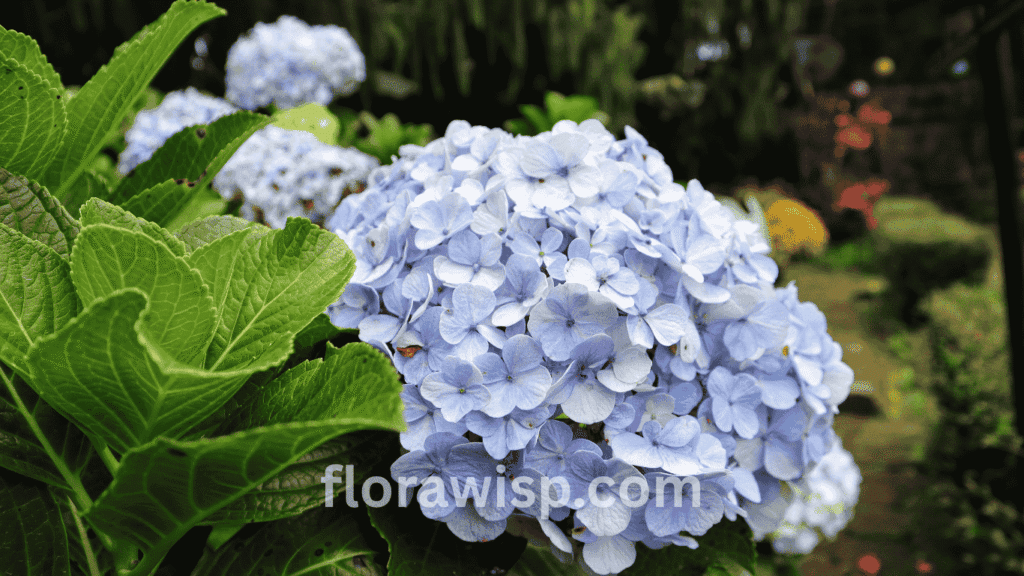
A timeless favorite in my garden, Nikko Blue Hydrangea thrives in USDA Zones 5–9 and can reach up to 6 feet tall and wide. With classic mophead blooms in a bold blue, it’s a reliable choice if your soil is acidic. I usually prune it just after flowering to maintain its shape without reducing next season’s bloom.
| Feature | Details |
| Hardiness | Zones 5–9 |
| Exposure | Partial shade to full sun |
| Height/Spread | 4–6 ft tall and wide |
| Bloom Time | Late spring to summer |
| Soil pH | Acidic (5.0–5.5) |
| Maintenance | Moderate (light pruning) |
Nantucket Blue Hydrangea
Nantucket Blue Hydrangea offers soft, light blue flowers throughout the season. Its compact growth makes it ideal for foundation beds or container gardening. I’ve found it especially charming near entryways.
| Feature | Details |
| Hardiness | Zones 5–9 |
| Exposure | Partial sun |
| Height/Spread | 3–4 ft tall, 4–5 ft wide |
| Bloom Time | Late spring to early fall |
| Soil pH | Slightly acidic |
| Maintenance | Low |
Blue Enchantress Hydrangea
Blue Enchantress Hydrangea is a showstopper. Its deep blue mophead flowers are set against dark burgundy-black stems, a stunning contrast. I use it in decorative pots on my patio, where it thrives in dappled afternoon shade.
| Feature | Details |
| Hardiness | Zones 6–9 |
| Exposure | Partial shade |
| Height/Spread | 3–5 ft tall and wide |
| Bloom Time | Late spring through summer |
| Soil pH | Acidic |
| Maintenance | Low |
Blue Jangles Hydrangea
This compact variety is perfect for small urban gardens. With dense foliage and reliable, rich blue blooms, it fits beautifully in borders or small beds.
| Feature | Details |
| Hardiness | Zones 5–9 |
| Exposure | Partial shade to full sun |
| Height/Spread | 2–3 ft tall and wide |
| Bloom Time | Summer |
| Soil pH | Slightly acidic to neutral |
| Maintenance | Low |
Rhythmic Blue Hydrangea
Rhythmic Blue Hydrangea earns its name for its reliable and vibrant reblooming. I love pairing it with hostas and ferns to highlight its bright blue-purple flowers.
| Feature | Details |
| Hardiness | Zones 5–9 |
| Exposure | Partial shade |
| Height/Spread | 3–5 ft tall and wide |
| Bloom Time | Late spring through summer |
| Soil pH | Acidic |
| Maintenance | Moderate |
Endless Summer Blue Hydrangea
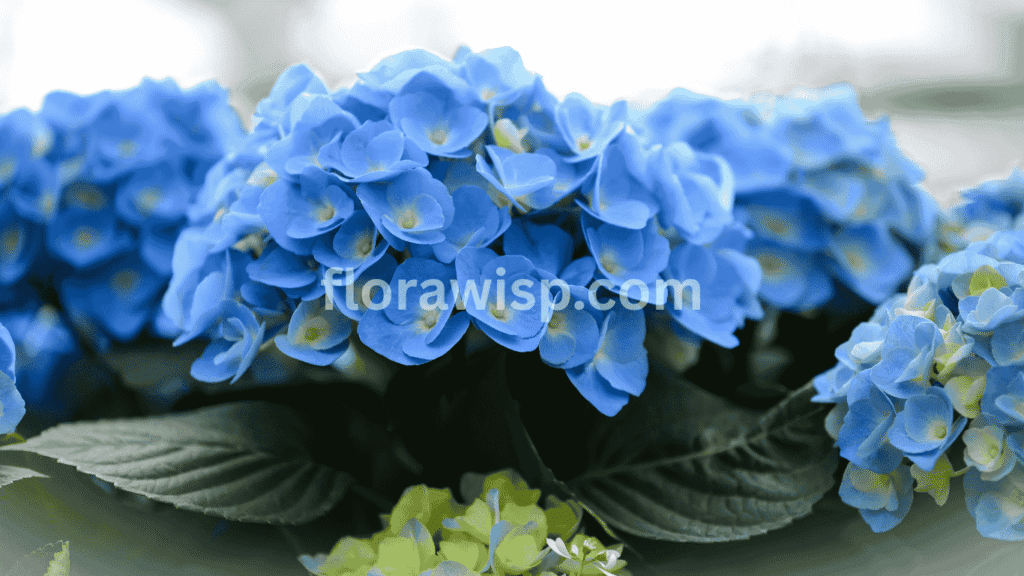
One of the most dependable varieties I grow, Endless Summer Blue Hydrangea blooms on both old and new wood ideal after tough winters. Its full, showy blooms thrive in bright morning sun with some afternoon shade.
| Feature | Details |
| Hardiness | Zones 4–9 |
| Exposure | Morning sun, afternoon shade |
| Height/Spread | 4–5 ft tall and wide |
| Bloom Time | Early summer to fall |
| Soil pH | Acidic |
| Maintenance | Low |
Blue Lacecap Hydrangea
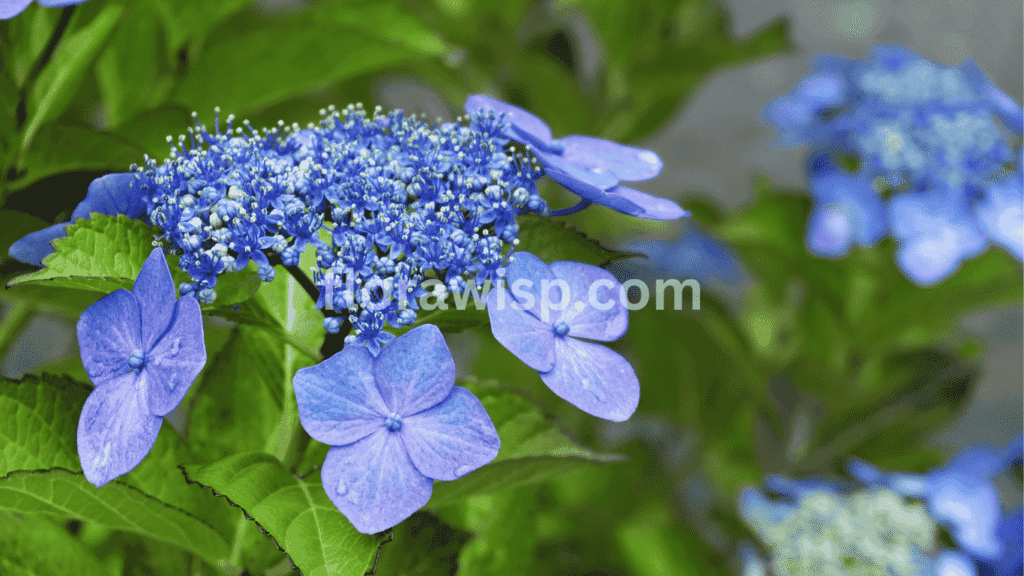
For a more delicate appearance, Blue Lacecap Hydrangea features flat blooms with fertile centers that attract bees and butterflies. Perfect for woodland edges.
| Feature | Details |
| Hardiness | Zones 5–9 |
| Exposure | Partial shade |
| Height/Spread | 3–5 ft tall and wide |
| Bloom Time | Mid to late summer |
| Soil pH | Slightly acidic |
| Maintenance | Moderate |
Blue Billow Hydrangea
Blue Billow Hydrangea is a graceful deciduous shrub with lacecap flowers and soft blue tones. I often recommend it for naturalized, woodland settings.
| Feature | Details |
| Hardiness | Zones 5–8 |
| Exposure | Part shade |
| Height/Spread | 3–5 ft tall and wide |
| Bloom Time | Early to mid-summer |
| Soil pH | Slightly acidic |
| Maintenance | Low |
Dark Blue Hydrangea
These rare varieties offer deep, velvety tones that truly stand out. I mulch them heavily with pine needles to retain acidity and enhance the color.
| Feature | Details |
| Hardiness | Zones 5–9 |
| Exposure | Partial sun |
| Height/Spread | 3–6 ft tall and wide |
| Bloom Time | Summer |
| Soil pH | Strongly acidic |
| Maintenance | Moderate |
Each of these blue hydrangea varieties brings a unique touch to your garden. Whether you’re after compact container-friendly types or dramatic large blooms, there’s a perfect fit for every setting.
How to Plant Blue Hydrangeas the Right Way
Planting a blue hydrangea the right way sets the foundation for healthy growth and vibrant blooms.
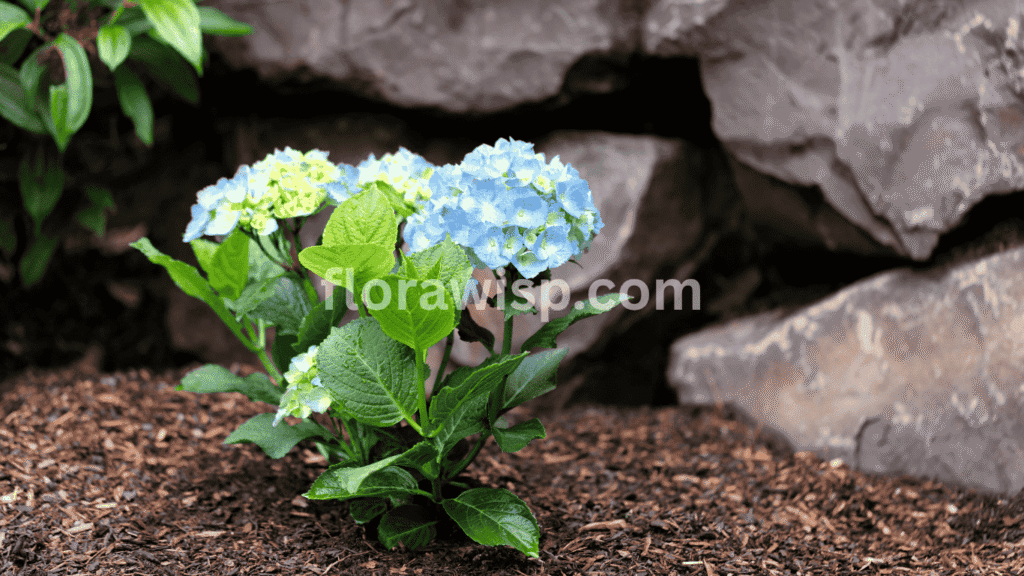
Choose the Perfect Spot
Hydrangeas thrive best in areas with morning sunlight and afternoon shade. Too much sun, especially in the heat of the day, can cause leaf scorch and faded blooms. On the flip side, planting them in dense shade may reduce flowering. I always aim for dappled light or a spot that gets 4–6 hours of sun each day.
Prepare the Soil for Blue Blooms
To keep the classic blue color, your soil must be acidic, ideally with a pH between 5.0 and 5.5. I amend my planting beds with pine bark fines, peat moss, and a bit of aluminum sulfate before planting. These additions improve drainage, add organic matter, and encourage the right pH for rich blue tones.
Dig and Space Wisely
I recommend planting hydrangea shrubs in early spring or early fall, when temperatures are mild. Dig a hole twice as wide as the root ball but no deeper than the plant’s base. This allows roots to spread without sinking the crown. For spacing, leave at least 3 feet between bushes to allow for mature spread and airflow.
Label and Track Your Plants
With so many hydrangea varieties out there, proper labeling helps avoid mix-ups. I’ve seen gardeners unintentionally plant pink or white mopheads thinking they were blue. Use plant tags and keep a simple garden map to track your hydrangeas.
Don’t forget to test your soil pH every season, especially if you notice color changes. I test mine every spring to ensure it stays within the ideal range.
Whether you’re adding one blue hydrangea plant or creating a full hedge, getting the planting process right ensures healthy bushes and consistent color season after season.
The Secret to Getting That Perfect Blue Color
One of the most common questions I get as a gardener is: “How do you keep your blue hydrangea flowers so vibrant?” The secret lies in the soil. If you’re after that deep, striking hydrangea blue color, everything starts with maintaining the right pH and nutrient levels.
Mastering Soil pH for Rich Blue Tones
To achieve a true blue hydrangea hue, your soil needs to be acidic, ideally with a pH between 5.0 and 5.5. When soil is too alkaline, flowers may shift to purple or even pink. I recommend testing your soil every spring using a reliable soil test kit.
To maintain that pH range, I apply aluminum sulfate at the base of my plants in early spring, just as growth begins. Aluminum is essential because it binds with the plant’s pigments to create that signature blue. For gardeners seeking a more subdued blue green hydrangea color, a pH of around 5.2 often does the trick.
Natural Ways to Support Soil Acidity
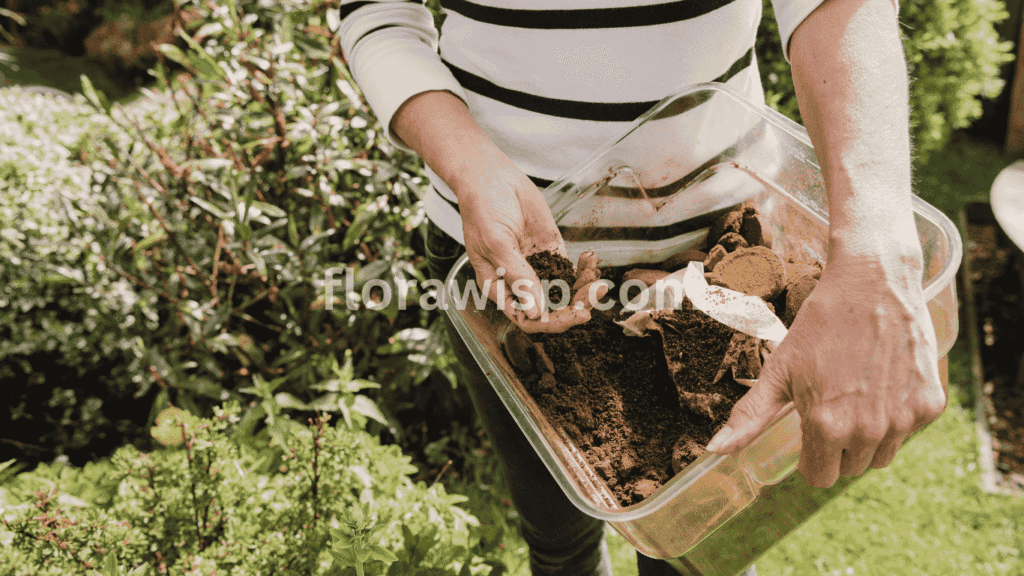
While store-bought soil amendments help, I always lean into organic matter. Pine needles, coffee grounds, and shredded oak leaves are fantastic mulch options that slowly acidify the soil while retaining moisture. Just be sure not to overdo it, balance and consistency matter.
Avoid using lime or wood ash around your hydrangeas, as these materials increase pH and often cause blooms to lean pink or purple. If you start seeing hydrangea blue and pink or blue purple hydrangea tones on the same plant, your soil may be fluctuating in pH.
Keep Conditions Consistent
I amend my soil every spring and again mid-season in raised beds where nutrients wash out more quickly. Applying hydrangea blue fertilizer specifically formulated for color retention helps reinforce acidity while providing the right nutrient blend.
Use bark mulch around the base to retain acidity and moisture. In my experience, this simple habit alone has helped maintain that rich blue hydrangea color even through tough summers.
Year-Round Care: Watering, Feeding & Pruning
Proper care throughout the year ensures your blue hydrangea doesn’t just survive, it thrives. I’ve fine-tuned a reliable care routine that keeps my bushes blooming strong, even in hot or unpredictable seasons.
Watering: Deep and Consistent
The water needs of a hydrangea plant change with the seasons. During peak summer, I water deeply two to three times per week, especially during dry spells. Drip irrigation or soaker hoses are ideal; they hydrate deeply without soaking the leaves.
Keep an eye on your mulch layer; a two-inch bark mulch blanket keeps the roots cool and reduces water loss. Early mornings are best for watering to prevent fungal issues.
Feeding: Less Nitrogen, More Blooms
When it comes to feeding blue hydrangea plants, less is more. I fertilize in early spring with a low-nitrogen, high-potassium blend. Too much nitrogen produces lush green leaves but limits flowering.
Look for a fertilizer labeled specifically for hydrangeas, or use a balanced option like 10-10-10 in smaller amounts. If you’re planting a blue hydrangea plant for the first time, enriching the soil with compost helps set the stage for steady growth.
Pruning: Know Your Variety
Pruning techniques vary by type. Mophead blue hydrangea bushes bloom on old wood, so I prune lightly just after they flower usually midsummer. If you grow Endless Summer or early blue hydrangea varieties, which bloom on new and old wood, you can prune them in early spring without sacrificing blooms.
When purchasing blue hydrangea plants for sale, always ask whether the variety of flowers on old wood, new wood, or both makes a big difference in how and when you prune.
With regular care and seasonal attention, your blue hydrangea will reward you with stunning blooms year after year.
How to Use Blue Hydrangeas in Your Landscape
Incorporating blue hydrangea shrubs into your landscape can elevate any garden with a burst of cooling color and texture. Over the years, I’ve used blue hydrangeas to frame entryways, anchor perennial beds, and even brighten up container corners on shaded patios.
Best Placement Ideas
Blue hydrangeas work wonderfully as anchor plants in mixed borders or as loose hedges along walkways and fences. Their rounded form and lush foliage create visual softness, especially when paired with structured evergreens or vertical elements like trellises.
I recommend planting blue and white hydrangea varieties together for a soft, balanced look. The crisp contrast between ivory and sky-blue blooms is one of my favorite combinations in the garden, particularly near sitting areas or shaded pergolas. When planting, stick to odd grouping threes or fives to mimic natural growth patterns.
Companion Planting Tips
I frequently pair blue hydrangea shrubs with silver-foliaged companions like lamb’s ear or dusty miller. The muted tones enhance the intensity of blue blooms without overwhelming them. For a cottage feel, try mixing blue and purple hydrangea cultivars alongside white roses or lavender.
Hostas and ferns also make excellent understory partners. Their large, green leaves complement the texture of hydrangea bushes while helping retain soil moisture, a bonus for hot climates. For a bolder look, I often combine them with Limelight Hydrangea, its upright form and lime-to-pink blooms contrast beautifully with the cool tones of blue varieties.
Container & Small-Space Solutions
If space is limited, blue hydrangeas in containers can still make a big statement. Choose dwarf varieties and plant them in large pots with good drainage. Surround them with trailing ivy or creeping jenny to soften the container edges. For more tips on growing and caring for potted hydrangea, check out our detailed guide.
Gorgeous Blue Hydrangea Bouquets & Centerpiece Ideas
There’s something undeniably romantic about a blue hydrangea bouquet. Its full, rounded blooms and rich color add volume and depth to floral designs whether you’re decorating a wedding venue or dressing up your dining table.
Bridal Bouquet Inspiration
When I prepare bridal arrangements, blue hydrangea flowers are often the star. Their soft yet vivid blue works beautifully with white peonies, baby’s breath, and silver dollar eucalyptus. I’ve used them in everything from beach weddings to rustic barn ceremonies. For a timeless look, pair them with creamy roses or soft blush accents.
Bridal bouquet blue hydrangea arrangements are particularly beloved for vintage and coastal-themed weddings. Their petal clusters photograph beautifully and last well through the day when kept hydrated.
Centerpieces for Home & Events
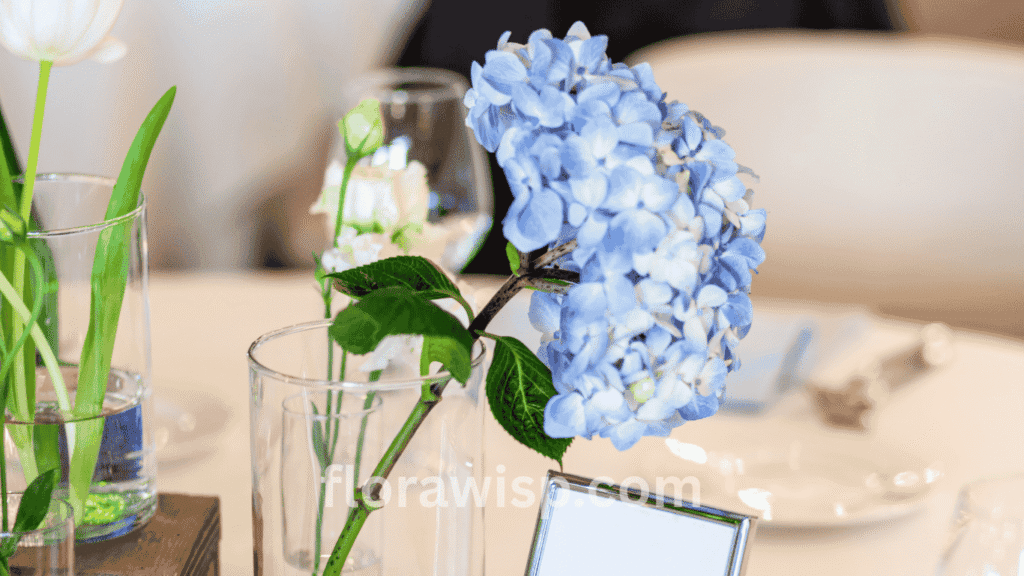
Blue hydrangea centerpieces bring elegance to any table setting. Low, rounded designs are perfect for intimate dinners, while tall arrangements with mixed greenery work well for events. For a fresh yet calming palette, I often combine blue and white hydrangea bouquet arrangements with accents of sage and white taper candles.
These flowers also work well in minimalist or monochrome schemes; a few well-placed blooms can transform a space.
Artificial & Dried Blue Hydrangea Decor Trends
As much as I love tending to fresh blooms, there’s something rewarding about using artificial blue hydrangea and dried arrangements in home décor. These long-lasting options bring the charm of blue hydrangeas indoors, with minimal upkeep and timeless appeal.
Decorating with Faux Blue Hydrangeas
High-quality faux blue hydrangea stems have become nearly indistinguishable from the real thing. I often use blue hydrangea silk flowers in entryway vases or as table centerpieces especially during the winter months when my garden rests. Choose stems with wired bases and realistic textures for the most natural look.
One of my favorite seasonal touches is a blue hydrangea wreath on the front door. Whether it’s spring or fall, these silk arrangements bring a refreshing pop of color that stays vibrant year-round. I also recommend pairing faux hydrangeas with greenery like eucalyptus or lamb’s ear to soften the display.
Drying Real Blue Hydrangeas for Keeps
For those who love working with what the garden gives, dried blue hydrangea flower arrangements are both eco-friendly and elegant. I harvest blooms just as they begin to age when petals turn slightly papery but still hold color. Hang stems upside down in a dark, dry place with good airflow. After about 2–3 weeks, you’ll have preserved blooms that last for months.
I often create a blue hydrangea arrangement using a mix of dried and faux flowers, combining the textures and depth of color to match my home’s seasonal palette.
Blue Hydrangea in Pop Culture & Symbolism
The emotional weight carried by the blue hydrangea has made it a beloved symbol across cultures and creative spaces. In my years of gardening, I’ve seen how their serene tones evoke strong feelings of peace, grace, and remembrance.
The Symbolic Heart of Blue Hydrangeas
The blue hydrangea meaning is often tied to sincerity, gratitude, and heartfelt emotion. I personally like to include them in sympathy gardens or gift arrangements where words fall short. Their message is subtle, yet deeply touching.
From classic wedding designs featuring blue hydrangea with white roses to quiet memorial corners in a shaded backyard, these blooms say so much without needing a single word.
FAQs
Q: What makes a hydrangea blue?
The secret to a blue hydrangea lies in soil pH. Acidic soil below pH 5.5 allows aluminum to be absorbed, turning blooms blue. I’ve consistently seen rich blues by using aluminum sulfate and avoiding lime. Keep soil moist and well-drained to support uptake. Regular soil testing ensures lasting color.
Q: Where to buy blue hydrangea?
You can find blue hydrangea plants at reputable local nurseries or order from trusted online retailers. I recommend searching in spring for the best variety availability. Check labels for reblooming traits and verify bloom color with pH details.
Q: How to grow blue hydrangea plants?
To grow blue hydrangea plants, choose a partly shaded location with moist, acidic soil. I prep with compost and test pH before planting. Water consistently, feed lightly, and mulch generously. In my zone, early spring planting works best.
Q: How to plant blue hydrangea?
Dig a wide hole twice the root ball size. Mix in organic matter and place the plant slightly above soil level. Water deeply. I always add pine mulch to maintain soil acidity. The best time to plant is early spring or fall.
Q: What does blue hydrangea symbolize?
Blue hydrangea symbolizes peace, gratitude, and sincere emotions. I often use them in remembrance gardens. Their soft tones evoke calm and balance, perfect for contemplative spaces or sympathy bouquets.
Conclusion
Blue hydrangeas bring timeless elegance, soothing colors, and reliable beauty to any garden. From Nikko Blue to Blue Enchantress, each variety offers its own charm. Whether you’re designing landscapes, making bouquets, or decorating with dried blooms, this versatile flower deserves a spot in your space.
With the right soil, care, and a little know-how, you can enjoy vibrant blooms season after season. I encourage every gardener to try at least one blue hydrangea plant. It pairs beautifully with a white hydrangea, creating a serene and balanced display that enhances both color and texture in any garden bed.
References
United States Department of Agriculture (USDA) – Plant Hardiness Zones
North Carolina State University Extension – Hydrangea Care
Gardener, M.Sc. Horticulture
Elara Bennet is a gardening writer from Austin, TX, passionate about sustainable lawns and blooms. Read full bio →

